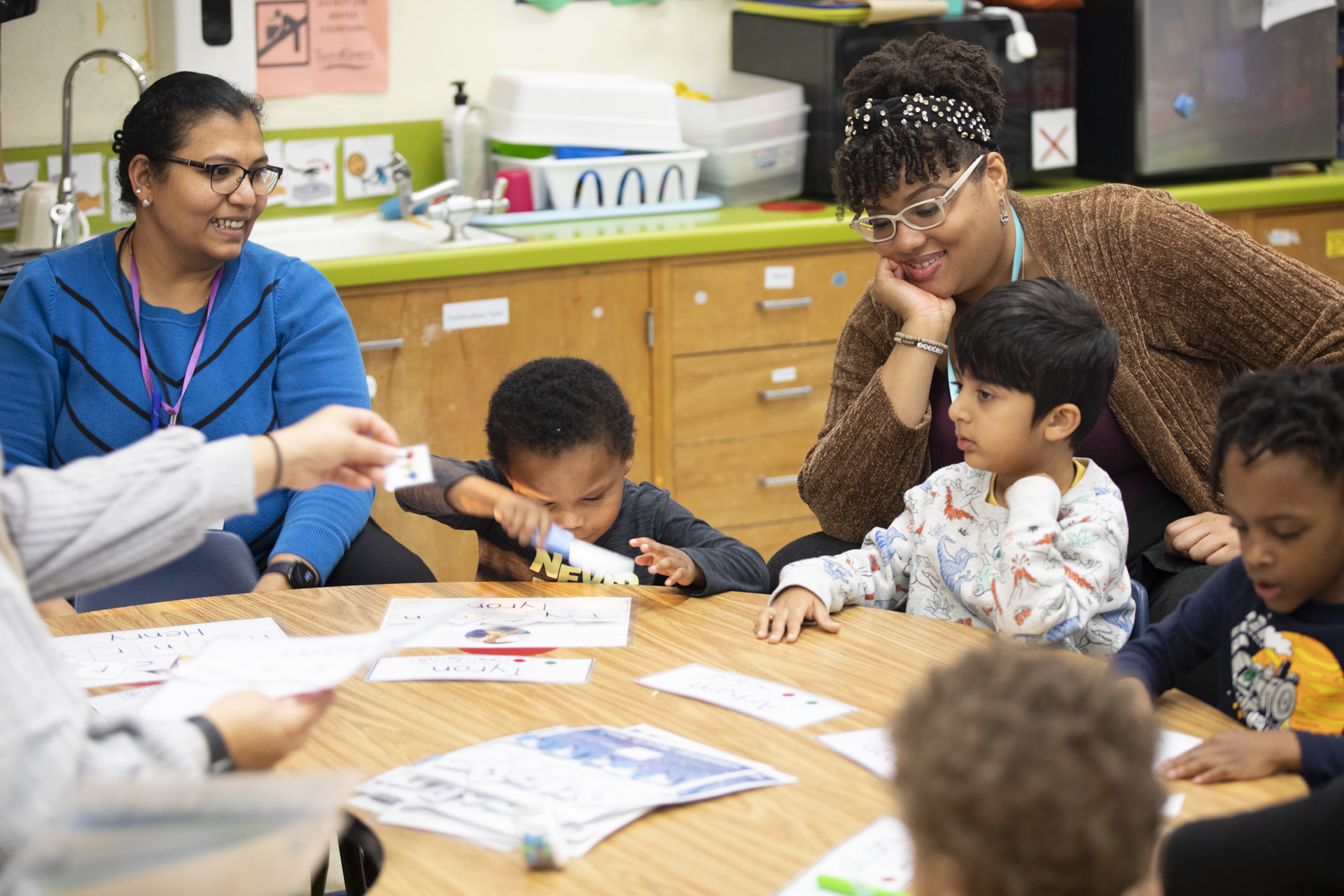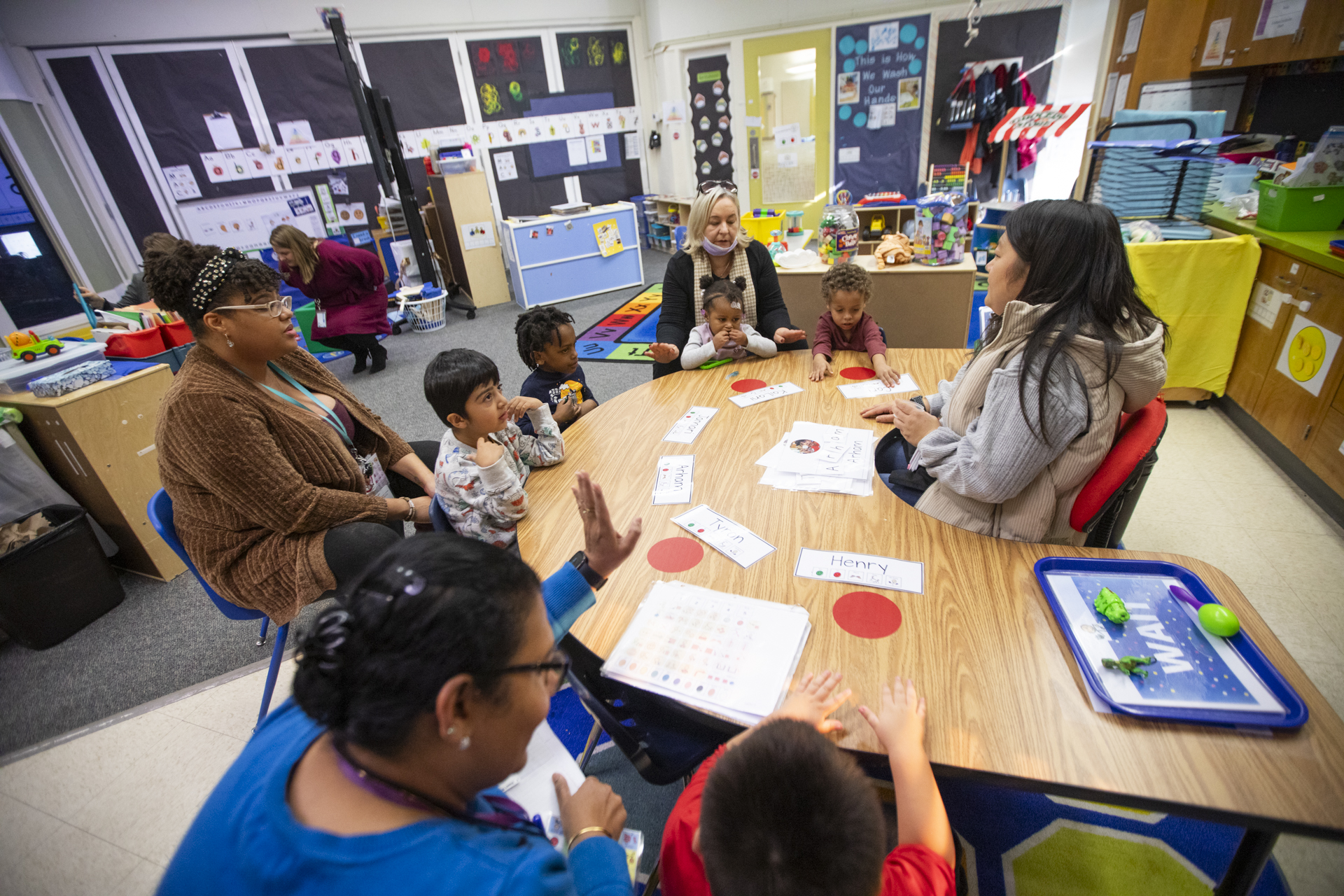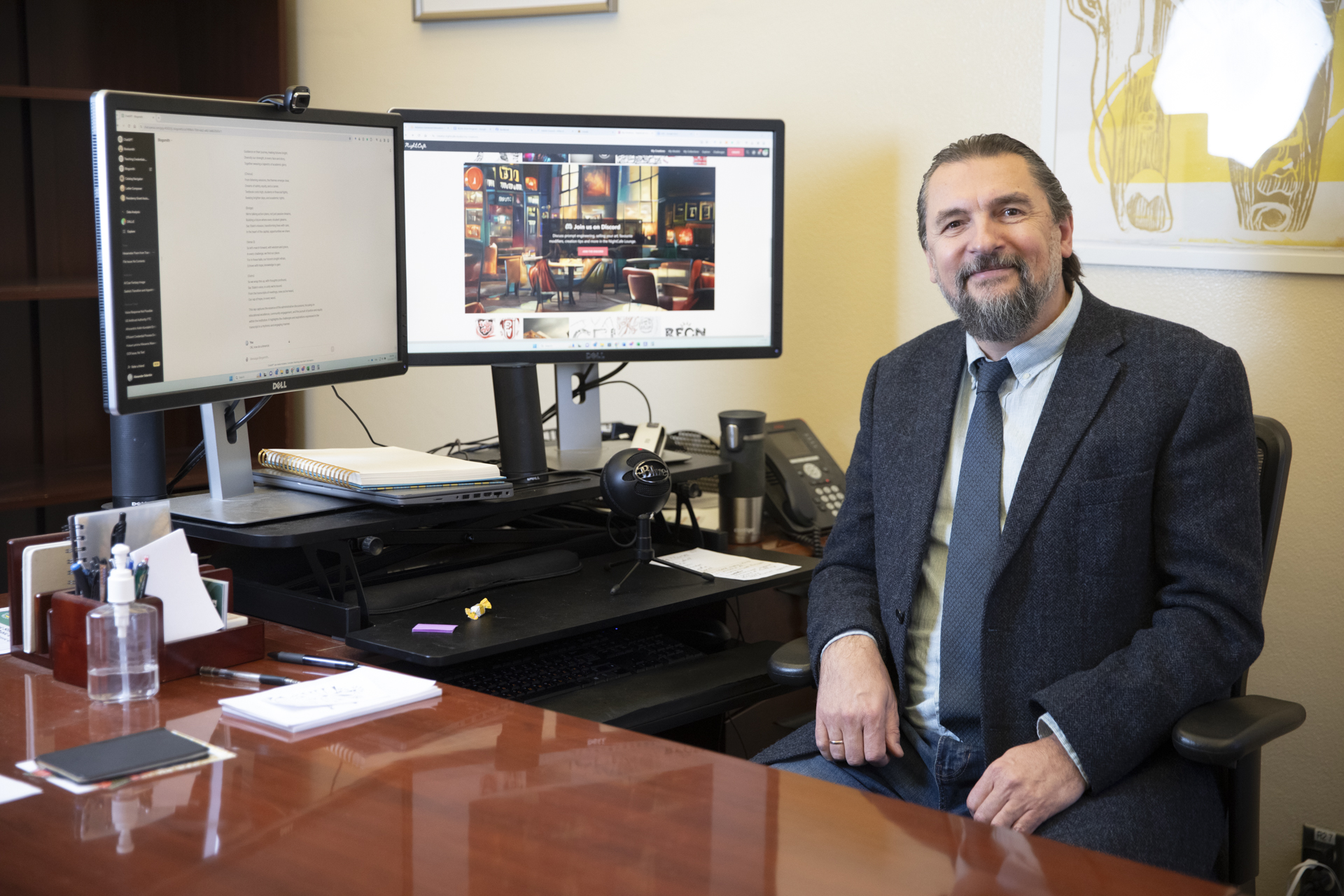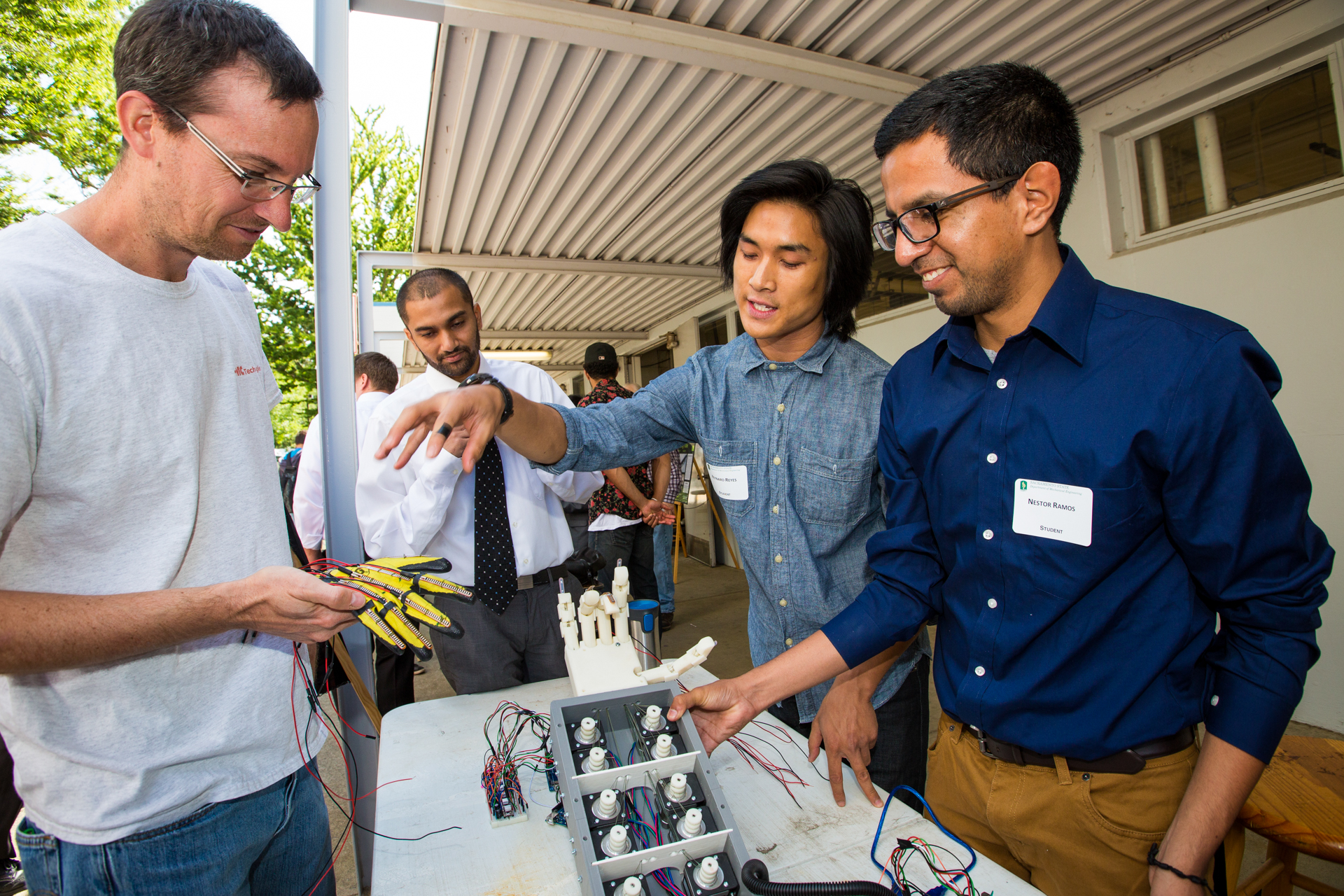Story Content
New special education teacher residency program aims to better prepare, support future educators

January 10, 2024
On a cool December day at Vineland Preschool in Rio Linda, special education teacher Sher Thao gathered her six students around a table to take roll.
“Look who came to school today,” Thao sang, adding each child’s name into the song, followed by the words “came to school today.”
As she sang, Sacramento State Teaching Credential student Jasmine Howard sat nearby, observing.
Thao and Howard are one of 13 student-mentor pairs in the first cohort of Sac State College of Education’s (COE) new Sacramento Metro Special Education Teacher Residency (SMSTR) scholarship program.
The program, which guarantees residents a job after graduation, gives Sac State special education credential students a more meaningful and supportive training experience while helping the participating districts combat turnover and hire highly qualified and motivated teachers.
Vineland is part of the Twin Rivers Unified School District, one of 10 participating Sacramento-area pre-K-12 school districts.
For many students, residencies are better than paid internships because they provide added support both financially and in the classroom, said Cindy Collado, a Sac State associate professor of Education and SMSTR program coordinator.
In recent years, districts have seen an increase in burnout and turnover among new teachers who complete internships, she added.
“Interns are left alone typically, and are often overwhelmed by all of their responsibilities,” Collado said. “I believe the stress they experience is also from doing a job they’re not yet prepared to do with all the expectations of a veteran teacher, and less support.”
“We want (students) to have those skills, but also have a community that helps them find joy in teaching and stay in the field for a long time. This is an investment in them and the future of our career.” -- Cindy Collado, Sac State associate professor of Education
The SMSTR program is primarily funded by the California Commission on Teacher Credentialing, which recently increased the program’s scholarship from $23,000 to $38,000 per resident.
“Hopefully this will also help us to recruit more residents in the future as well because they’ll receive more compensation for doing the work,” said COE Interim Associate Dean Aaminah Norris, who oversees Sac State’s residency programs.
Residents complete two intense summer courses before being placed into classrooms to learn under a full-time teacher for the fall and spring semesters. Upon completion of the program, they are hired as teachers for the following school year, ideally in the same district.
“The students are connected with their colleagues and the other mentor teachers as well, so even if (the job is) not in the district that they're in, at least they know someone in the district,” said Collado.
The residents aren’t the only ones who benefit from the program. SMSTR mentors get to shore up their coaching and training skills.
“It’s going pretty well,” said Thao, who has taught at Vineland for six years. “I’m kind of stepping into this mentorship thing, it’s kind of really new for me.”
Mentors attend training sessions to learn how to work with their residents, and program leadership works to ensure residents are paired with like-minded mentors.
“The mentor seminar gives insight on how to work with our mentees and how to coach through certain things and just taking a step back to be more reflective about myself as a mentor and how I can guide Jasmine,” Thao said. SMSTR’s structure sets it apart from other programs, she added.
“You get a taste of (what you’re going to do) before you really get put out there in the real world,” she said.

Howard said working with Thao has been a fairly seamless process and praised Sac State’s teaching program.
“I feel like they're doing an awesome job, especially with the SMSTR program and partnering up with the residents, of just making sure that we're supported,” Howard said. “It's a great opportunity, especially for people of color.
“That was another reason I wanted to go into this field,” added Howard, who is Black. “So I could be a representative for children who look like me.” That’s a goal she shares with Thao, who is Hmong and said she became a teacher to help underserved communities.
Howard has already accepted a post-graduation, full-time teaching job with Vineland, an offer that Principal and Special Education Coordinator Johana Scott said was a direct result of her success in the SMSTR program.
“I can see her passion in the classroom,” she said. “I know that she's highly qualified and she really is taking what she's learning in the classroom at Sac State into our actual classroom.”
That pipeline to the workforce makes the SMSTR program invaluable for participating districts.
“It reinforces our district's mission and what we want to do for our children by really putting our words into action,” said Scott. “It means a lot for me as a school leader because I'm getting in on ground zero with one of my future teachers and leaders.”
Amid ongoing teacher shortages, Joy Davis, special education director for the Twin Rivers district, said she hopes to see Howard and Thao’s success replicated throughout the program.
“Twin Rivers’ goal is always to build the best possible teams and achieve the best outcomes for students,” she said.
Collado said Howard and Thao are a perfect example of why the SMSTR program will continue to succeed going forward.
“We want them to have those skills, but also have a community that helps them find joy in teaching and stay in the field for a long time,” Collado said. “This is an investment in them and the future of our career.”
Back in the Vineland Preschool classroom, roll call had finished and the kids excitedly engaged in a holiday-themed counting activity, one of many learning experiences during the nearly three-hour afternoon class.
Sitting amidst construction paper artwork, and myriad educational toys, Howard was excited about her future.
“This site is wonderful. I love it here. I love the environment,” she said. “Everybody is so helpful, so (Vineland) is going to be my home.”
To learn more about the SMSTR program, which is currently accepting applications for its second cohort, visit its official web page.
Editor's Pick
Media Resources
Faculty/Staff Resources
Looking for a Faculty Expert?
Contact University Communications
(916) 217-8366
communications@csus.edu


